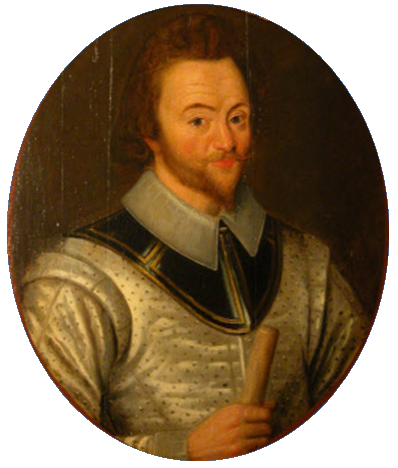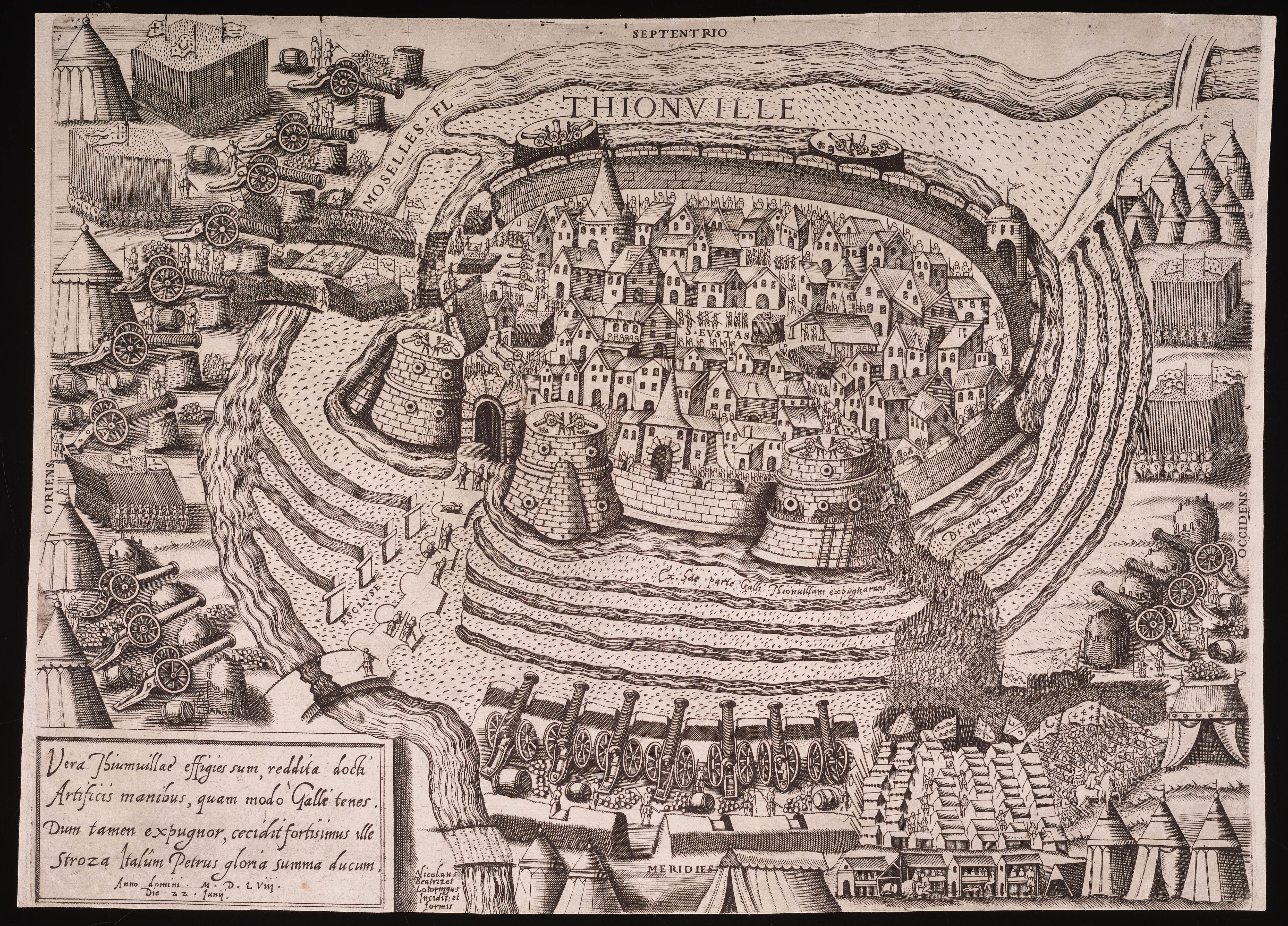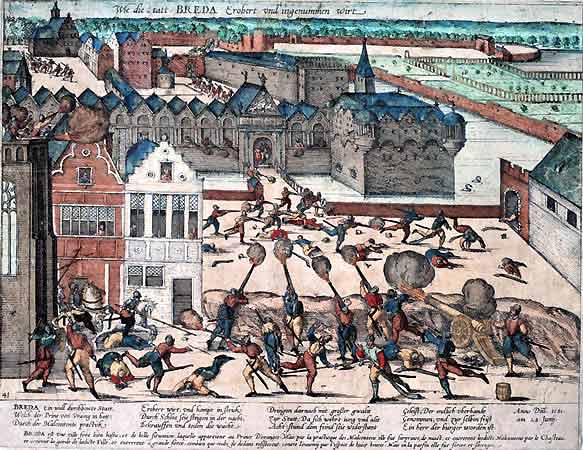|
Francisco Verdugo
Francisco Verdugo (1537–1595), Spanish military commander in the Dutch Revolt, became ''Maestre de Campo General,'' in the Spanish Netherlands. He was also the last Spanish Stadtholder of Friesland, Groningen, Drenthe and Overijssel between 1581 and 1594. Biography He has been described as a brave, courteous and very experienced soldier, who rose from the rank of musketeer, which he held at the siege of Haarlem, to the governor of Frisia. When he was 20 he participated in the Battle of Saint-Quentin in August 1557. Nominated Governor of Haarlem in 1573, as an Admiral of the Spanish Fleet he helped to conquer Flanders. In 1576, he became Councillor of State. After the arrival in Brussels in 1577 of Juan of Austria, (1547–1578, aged 31), the half brother of King Philip II of Spain, Verdugo was promoted to Governor of Breda, and later of Thionville and of the Citadel of Namur. He married in 1578, aged 41, Dorothea von Mansfeld, one of the daughters of Count Peter Ernst I von M ... [...More Info...] [...Related Items...] OR: [Wikipedia] [Google] [Baidu] |
Talavera De La Reina
Talavera de la Reina () is a city and municipalities of Spain, municipality of Spain, part of the autonomous communities of Spain, autonomous community of Castile–La Mancha. Its population of 83,303 makes it the second most populated municipality of the province of Toledo and the fourth largest in the region. Although the city straddles both banks of the Tagus, a few kilometres downstream from the junction of the former with the Alberche, most of the urbanisation concentrates on the right (northern) bank. There are two islands in the centre of the city called Isla Grande and Chamelo Island. Three bridges cross the Tagus in Talavera. The city is well known for its pottery craft. The Talavera de la Reina pottery was declared intangible cultural heritage by UNESCO in 2019. Toponymy There are remnants of prehistoric cultures in the area. The village was founded by the Celts as a ford of the Tagus. The first mention of the city (with the name ''Aebura'') occurs in Livy's description ... [...More Info...] [...Related Items...] OR: [Wikipedia] [Google] [Baidu] |
Haarlem
Haarlem (; predecessor of ''Harlem'' in English language, English) is a List of cities in the Netherlands by province, city and Municipalities of the Netherlands, municipality in the Netherlands. It is the capital of the Provinces of the Netherlands, province of North Holland. Haarlem is situated at the northern edge of the Randstad, one of the Largest European cities and metropolitan areas, more populated metropolitan areas in Europe; it is also part of the Amsterdam metropolitan area. Haarlem had a population of in . Haarlem was granted city status or in 1245, although the first city walls were not built until 1270. The modern city encompasses the former municipality of Schoten, Netherlands, Schoten as well as parts that previously belonged to Bloemendaal and Heemstede. Apart from the city, the municipality of Haarlem also includes the western part of the village of Spaarndam. Newer sections of Spaarndam lie within the neighbouring municipality of Haarlemmermeer. Geography ... [...More Info...] [...Related Items...] OR: [Wikipedia] [Google] [Baidu] |
Groningen (city)
Groningen ( , ; ; or ) is the capital city and main municipality of Groningen (province), Groningen province in the Netherlands. Dubbed the "capital of the north", Groningen is the largest place as well as the economic and cultural centre of the northern part of the country; as of January 2025, it had 244,807 inhabitants, making it the sixth largest city/municipality in the Netherlands and the second largest outside the Randstad. The Groningen metropolitan area has a population of over 360,000. Groningen was established more than 980 years ago but never gained City rights in the Low Countries, city rights. Due to its relatively isolated location from the then successive Dutch centres of power (Utrecht, The Hague, Brussels), Groningen was historically reliant on itself and nearby regions. As a Hanseatic League, Hanseatic city, it was part of the North German trade network, but later it mainly became a regional market centre. At the height of its power in the 15th century, Gron ... [...More Info...] [...Related Items...] OR: [Wikipedia] [Google] [Baidu] |
William Louis, Count Of Nassau-Dillenburg
William Louis of Nassau-Dillenburg (; ; 13 March 1560, Dillenburg, Hesse – 13 July 1620, Leeuwarden, Netherlands) was Count of Nassau-Dillenburg from 1606 to 1620, and stadtholder of Friesland, Groningen, and Drenthe. Life William Louis was the eldest son of John VI, Count of Nassau-Dillenburg and his first wife, Elisabeth of Leuchtenberg. He served as a cavalry officer under William the Silent. Together with his cousin (and brother-in-law) Maurice of Nassau, Prince of Orange, he commanded the Dutch States Army and helped plan the military strategy of the Dutch Republic against Spain from 1588 to 1609. William Louis played a significant part in the Military Revolution of the 16th–17th centuries. In a letter to his cousin Maurice of Nassau, Prince of Orange which he composed on 8 December 1594, he set out (from reading Aelianus Tacticus) an argument based on the use of ranks by soldiers of Imperial Rome as discussed in Aelian's Tactica. Aelian was ... [...More Info...] [...Related Items...] OR: [Wikipedia] [Google] [Baidu] |
Maurice Of Nassau, Prince Of Orange
Maurice of Orange (; 14 November 1567 – 23 April 1625) was ''stadtholder'' of all the provinces of the Dutch Republic except for Lordship of Frisia, Friesland from 1585 at the earliest until his death on 23 April 1625. Before he became Prince of Orange upon the death of his eldest half-brother Philip William, Prince of Orange, Philip William on 20 February 1618, he was known as Maurice of Nassau. Maurice spent his youth in Dillenburg in County of Nassau, Nassau, and studied in Heidelberg University, Heidelberg and Leiden University, Leiden. He succeeded his father William the Silent as stadtholder of Holland and Zeeland in 1585, and became stadtholder of Utrecht, Guelders and Overijssel in 1590, and of Groningen in 1620. As Captain-General and Admiral of the Union, Maurice organized the Dutch Revolt, Dutch rebellion against Spain into a coherent, successful revolt and won fame as a military strategist. Under his leadership and in cooperation with the Land's Advocate of Ho ... [...More Info...] [...Related Items...] OR: [Wikipedia] [Google] [Baidu] |
Siege Of Lochem (1582)
The siege of Lochem also known as the Relief of Lochem was a siege that took place in the Dutch city of Lochem during the Eighty Years' War and the Anglo–Spanish War. The city was relieved by a States army composing of English and French Huguenot troops under Count Philip of Hohenlohe-Neuenstein and William Louis of Nassau-Dillenburg and John Norreys on September 24, 1582. This marked the end of the Spanish siege of the city by the Spanish general Francisco Verdugo.van den Broek pp 125-28 Background In the summer of 1581 Francisco Verdugo had been sent by the Duke of Parma to replace the Count of Rennenberg after his defeat by Anglo Dutch forces under John Norreys at Kollum.Nolan p 46 Verdugo was able to defeat Norreys at Noordhorn his attempt to seize Niezijl was foiled by stout resistance, mutiny, and bad weather in the autumn of 1581.Nolan p 47 The following year Verdugo instead turned his attention to Lochem, a city in Guelderland, where Johann Baptista von Taxis h ... [...More Info...] [...Related Items...] OR: [Wikipedia] [Google] [Baidu] |
John Norris (soldier)
Sir John Norris, or Norreys (''ca.'' 1547 – 3 September 1597), of Rycote, Oxfordshire, and of Yattendon and Notley in Berkshire, was an Kingdom of England, English soldier. The son of Henry Norris, 1st Baron Norreys, he was a lifelong friend of Elizabeth I of England, Queen Elizabeth. The most acclaimed English soldier of his day, Norreys participated in every Elizabethan theatre of war: in the French Wars of Religion, Wars of Religion in France, in Flanders during the Eighty Years' War of Dutch liberation from Spain, in the Anglo-Spanish War (1585), Anglo-Spanish War, and above all in the Tudor conquest of Ireland. Early life The eldest son of Henry Norris, 1st Baron Norreys, Henry Norreys by his marriage to Margery Norris, Marjorie Williams, Norreys was born at Yattendon Castle. His Henry Norris (courtier), paternal grandfather had been executed after being found guilty of adultery with Anne Boleyn, Queen Anne Boleyn, the mother of Elizabeth I of England, Queen Elizabeth. ... [...More Info...] [...Related Items...] OR: [Wikipedia] [Google] [Baidu] |
George De Lalaing
George de Lalaing count Rennenberg (c. 1550 – 23 July 1581), was stadtholder of Friesland, Groningen, Drenthe and Overijssel in the service of Philip II of Spain from 1577 to 1581. The Lalaing family came from Hainaut and had a tradition of governing. His father was Philip de Lalaing, count of Hoogstraten; his mother, Anna of Rennenberg. Life He was born around 1550, probably in Hoogstraten Castle (Gelmelslot) in the Campine. Rennenberg (as he was known in the Netherlands) was appointed stadtholder of the Northern provinces by the States General of the Netherlands after the Pacification of Ghent in 1577, on a proposal from William of Orange. He allowed a number of important reforms in Friesland, such as the introduction of the ''Gedeputeerde Staten'' (Delegated States), and the forming of a fourth quarter in the States of Friesland to represent the eleven Frisian cities. He was a firm believer in the Pacification of Ghent as a means to reconcile the rebellious Calvinists wit ... [...More Info...] [...Related Items...] OR: [Wikipedia] [Google] [Baidu] |
Peter Ernst I Von Mansfeld-Vorderort
Peter Ernst I von Mansfeld-Vorderort (20 July 1517 – 25 May 1604) was a Spanish Imperial army commander of German origin and Governor of the Spanish Netherlands from 1592 to 1594. Born in Heldrungen, Saxony, he was the 11th child (of 16) of Ernest II, Count of Mansfeld-Vorderort. His mother was Ernest II's second wife, Dorothea von Solms-Lich. ''Peter Ernst, Graf von Mansfeld-Friedeburg'' Military career As a young man, Peter Ernst came to the with . He participated in the[...More Info...] [...Related Items...] OR: [Wikipedia] [Google] [Baidu] |
Citadel Of Namur
The Citadel of Namur () is a fortress in the Walloon capital city of Namur, at the confluence of the Sambre and Meuse rivers. It is originally from the Roman era, but has been rebuilt several times. Its current form was designed by Menno van Coehoorn, and improved upon by Vauban after the siege of 1692. It has been classified as a Wallonia Major Heritage site. Its highest point sits at . Together with those at Dinant, Huy and Liège, the Citadel of Namur forms part of the so-called Meuse Citadels. The original citadel dates to 937. It achieved its present extent between 1631 and 1675, when the city was under Dutch control. This section was called "Terra Nova" to distinguish it from the smaller Médiane fort built adjacent in 1542 and ensuing years. A variety of subsidiary positions were built in the 18th century. It was disestablished as a military post in 1891, superseded by a new ring of forts around Namur that were calculated to prevent the city from being attacked with a ... [...More Info...] [...Related Items...] OR: [Wikipedia] [Google] [Baidu] |
Thionville
Thionville (; ; ) is a city in the northeastern French Departments of France, department of Moselle (department), Moselle. The city is located on the left bank of the river Moselle (river), Moselle, opposite its suburb Yutz. History Thionville was settled as early as the time of the Merovingian dynasty, Merovingians. After the fall of the Western Roman Empire, the region was inhabited by the Germanic Alamanni. It was known in the Medieval Latin, Latin of that era as ''Theudonevilla'' or ''Totonisvilla''. King Pepin the Short had a Kaiserpfalz, royal palace constructed here. The Synod of Thionville was held here beginning on 2 February 835. It reinstated Emperor Louis the Pious and reversed his former conviction on crimes — none of which he actually committed — and deposed the Archbishop of Rheims, Ebbo. The Synod was composed of 43 bishops. On 28 February 835, in Mainz, Ebbo admitted that Louis had not committed the crimes of which he had been indicted and for w ... [...More Info...] [...Related Items...] OR: [Wikipedia] [Google] [Baidu] |
Breda
Breda ( , , , ) is a List of cities in the Netherlands by province, city and List of municipalities of the Netherlands, municipality in the southern part of the Netherlands, located in the Provinces of the Netherlands, province of North Brabant. The name derived from ''brede Aa'' ('wide Aa' or 'broad Aa') and refers to the confluence of the rivers Mark (Dintel), Mark and Aa of Weerijs, Aa. Breda has 185,072 inhabitants on 13 September 2022 and is part of the Brabantse Stedenrij; it is the tenth largest city/municipality in the country, and the third largest in North Brabant after Eindhoven and Tilburg. It is equidistant from Rotterdam and Antwerp. As a Defensive wall, fortified city, it was of strategic military and political significance. Although a direct fiefdom of the Holy Roman Emperor, the city obtained a City rights in the Low Countries, municipal charter; the acquisition of Breda, through marriage, by the House of Orange-Nassau, House of Nassau ensured that Breda would be ... [...More Info...] [...Related Items...] OR: [Wikipedia] [Google] [Baidu] |





